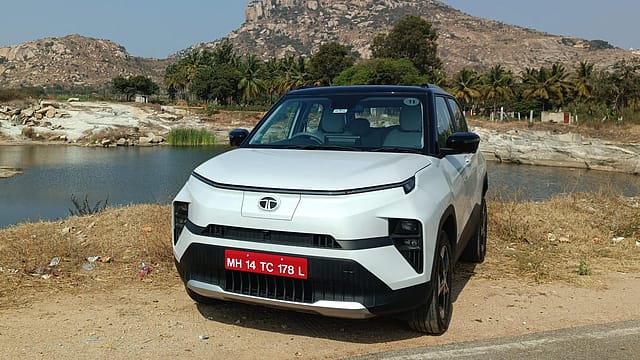Tata Punch EV review: Punching above its weight
ADVERTISEMENT

Tata Motors has cornered nearly three-fourths of India's fast-growing electric vehicle market, thanks to the popular Nexon EV, affordable entry-level hatch Tiago EV and sedan Tigor EV. India's largest electric carmaker is now looking to accelerate its EV sales with its fourth offering, the Punch EV.
Priced between ₹11 lakh and ₹15 lakh, the Punch EV targets mainstream buyers with its SUV body style. But what sets it apart from the automaker's other EV offerings is its "pure EV" architecture — Acti.ev. Unlike other Tata EVs, the battery was designed first while making the Punch EV and then the body was built around it. The latest platform allows the carmaker to switch to new battery technologies or prismatic cells, future-proofing the car's design. Tata currently uses cylindrical cells for all its EVs.
The Punch EV comes with two battery pack options — a 25-kilowatt-hour (kWh) basic version offering an ARAI-certified range of 315 kilometres and 82 horsepower of electric power, and a 35 kWh (122-hp) long-range option with 421 km of claimed range on a single charge.
Before I started the test drive of the white-coloured top trim which is dubbed as 'Empowered Oxide', the 100% state of charge (SOC) on the instrument cluster showed a range of 319 km.
After over an hour of driving it in the city mode for about 40 km, the SOC depleted to about 81% and showed a range of 251 km.
January 2026
Netflix, which has been in India for a decade, has successfully struck a balance between high-class premium content and pricing that attracts a range of customers. Find out how the U.S. streaming giant evolved in India, plus an exclusive interview with CEO Ted Sarandos. Also read about the Best Investments for 2026, and how rising growth and easing inflation will come in handy for finance minister Nirmala Sitharaman as she prepares Budget 2026.
However, the SOC soon recovered to 83% after using the highest regen mode effectively.
The EV offers three driving modes – Eco, City and Sport. I drove in the city mode for about 163-odd km which included a short stretch on a national highway. When I handed over the car six hours later, it had 32% of charge left.
EVs have low running costs and the 35-kWh battery of the long-range Punch EV can be fully charged under less than ₹300 using a 3.3-kilowatt portable charger — the average cost of electricity is ₹8 per unit. But if one wants to charge it a little faster, then they would have to pay an extra ₹50,000 for a 7.2 kW charger.
When topping up from a 50-kW DC charger, the battery charges from 10% to 80% in 56 minutes. To be clear, the battery's load-taking capacity is capped at 25 kW.
With the new EV platform, Tata has been able to free up some space for the frunk which can hold items weighing up to 5 kilograms.
Unlike Tata's other EVs, the charging port of the Punch EV is located at the front of the car and not on the side. It can be opened with the touch of a button on the centre console but you'll have to close the flap manually.
Even though the Punch EV is an electric iteration of its combustion-engine sibling Punch, it shares little in common with its ICE counterpart barring its proportions and design styling cues at the rear and on the sides. The connected DRL strip which runs across the bonnet looks quite similar to the Nexon EV.
The dashboard, too, looks like the Nexon EV with a 10.2-inch screen and a touch-sensitive control panel. The Punch EV comes with a rotary drive controller, unlike the Nexon EV which has a slick monostable shifter. The sunroof, which costs an additional ₹50,000, can also be operated using voice commands.
There are ventilated front seats for the driver and front passenger but no rear AC vent for the backseat passengers.
The car's boot space remains at 366 litres, the same as the ICE twin, but it has come at the cost of a spare wheel. Tata has provided a puncture repair kit instead of a stepney in the trunk.
The 190-mm ground clearance and neatly designed approach and departure angles allow it to tread over obstacles as well as sharp inclines and descents effortlessly. Tata had set up a rugged track to showcase the EV's off-road capabilities.
The Punch EV is likely to find a sweet spot in the mass market EV space where there is no competition from rival automakers.
